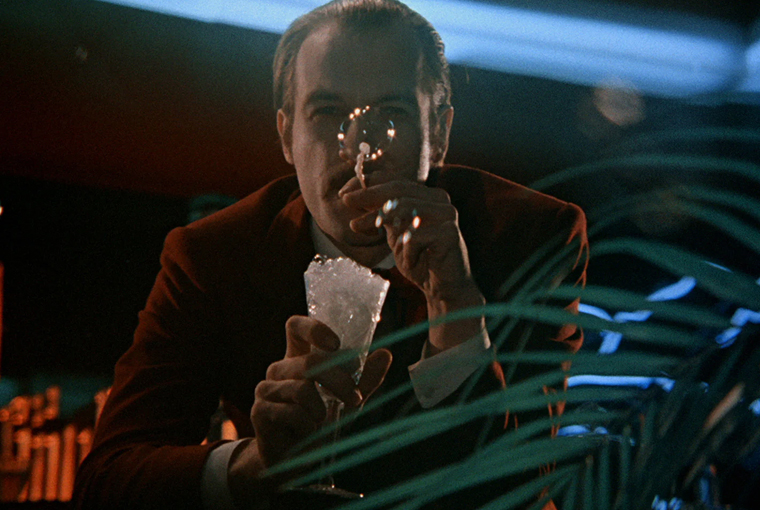
It is curious how much importance we attribute to rankings, even when, in more rational moments, we understand that whatever it is that is being rated cannot, in most cases, be represented by numbers, stars or thumbs. The first time most of us are confronted with this issue is in late elementary or early middle school years, when we receive a report card with a class and a grade next to it. Some of us may remember wondering what this number is supposed to represent. Did the grade truly capture the effort, curiosity, and interest we brought to the class, or was it simply a measure of our ability to memorize facts and follow instructions? Were we being graded as a person, as a student, or was the teacher grading their own ability to communicate the subject?
Rankings for movies are ubiquitous, they populate journal reviews, crowd online forums, and hover over streaming platforms. In our effort to sort, rank, classify, and grade, we are, in a way, turning into the teachers we once probed.
What is even more curious is that, on average, TV shows tend to be higher-ranked than movies. This is true for both press and audience ratings. On IMDb, the top 100 movies range from 9.3 to 8.3, whereas the 100 top TV shows start and end higher, at 9.5 and 8.7 respectively. On the website Rotten Tomatoes, which focuses on quantifying the views of critics, there is only one “certified fresh” TV Show Season in the top 100 that is not rated a full 100% (it still stands at 99%), whereas for movies the range quickly drops down to 96%. Less quantitatively, in this ranking, the expressionist classic Dr. Caligari is not as “fresh” as Hulu’s pen15 – and not because it is a century old.
It is unlikely that many film critics would agree, when asked whether Kieślowski’s Three Colors: Blue (97%), to pick an example more relevant to this journal, is three percent below Mad Men: Season 2 (100%). And below what exactly: artistic quality, entertainment factor? Probably most critics would brush the question aside. Comparing films and television shows is a senseless endeavor and rankings are overrated, a shallow measure of value at best. Yet, for all their supposed insignificance, rankings continue to be everywhere – and the puzzle of inflated TV show scores remains.
One way of thinking about this curiosity is to netflix-and-chill into the movie couch of the person doing the ranking and ask if the ranking, soulless as it may be, could perhaps reveal more about them than about the item under scrutiny.
Consider the act of binge-watching a television series. It requires hours of a person’s time – a surrender to idleness not taken lightly in a culture subordinating time to productivity. After having invested so much into a show, perhaps a need to justify that investment is imminent. For more puritan-minded individuals, giving a show five stars might then serve as a form of moral relief or self-forgiveness. Much like how religious indulgence once symbolized a way to absolve sin, a high rating redeems oneself from, quite literally, a guilty pleasure. It translates an act considered worthless into something valuable.
In that sense, what is being rated is not the quality of the show. It could, in fact, be the opposite. The more that hardship and endurance are part of the process, the higher the rating becomes. Convincing others to watch also helps. A thumbs-up from a fellow sinner can be morally reaffirming – it’s really a great show, a must-see, and totally worth it.
To spend hours in front of a screen may conflict with our self-image as social beings. Guilt may thus also stem from a social expectation that we are not supposed to be alone. Instagram feeds are not populated by selfies of people sitting alone on the couch, eyes fixed on their screens. Instead, the phrase “Netflix and chill” has become a euphemism for intimacy and connection, a collective reinterpretation that presents solitary viewing as a shared experience. Giving a five-star rating, like 100% of all the other viewers, essentially turns loneliness into a socially accepted, even desirable, activity.
Returning to the classroom, grade inflation may reflect a similar trend. Faced with disinterested students and institutional pressures, teachers may award higher grades – not as measures of merit, but perhaps to soothe their own uncertainties about the system. And so marks become less about the students and more about masking the cracks in the facade of education. As evening falls, a burned-out teacher may collapse onto the couch, seeking solace in an endless stream of entertainment; episodes blur together, hours slip away, and the weight of the day momentarily lifts. When the credits finally roll, they reach for their phone, tap onto a rating site, and grant the show an A+, no, a five-star rating.
***
At this year’s DOK Leipzig, Lucian Țion reviewed Renata Lučić’s A Year of Endless Days and Maka Gogaladze’s Ever Since I Knew Myself that both deal with the European East-West divide, if in ideologically dissimilar ways. At the BFI London Film Festival 2024, Jack Page saw Emanuel Pârvu’s Three Kilometers to the End of the World about a rural community’s complicity in a hate crime, and Damian Kocur’s Under the Volcano, in which a Ukrainian family are left homeless after learning that Russia has invaded their country. Ana Grgić and Antonis Lagarias critique Saulé Bliuvaité’s Toxic, the 2024 Golden Leopard winner, for reinforcing clichéd views on Eastern Europe. Finally, we revisited Grigori Kromanov’s 1979 (Soviet) Estonian Dead Mountaineer’s Hotel on the occasion of the Samizdat Eastern European film festival.
We hope you enjoy our reads.
Konstanty Kuzma & Moritz Pfeifer
Editors




Leave a Comment